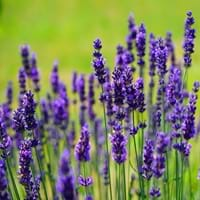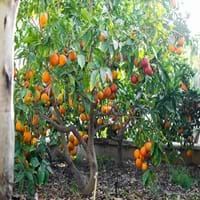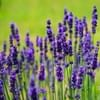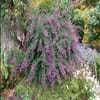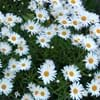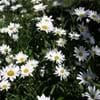Life Span
Perennial
Perennial
Origin
Mediterranean
Southeastern Asia, China
Types
Lodden Blue, Royal Velve, Melissa, Sachet, Sharon Roberts etc
Tarocco, Sanguinello,
Moro
Number of Varieties
Not Available
Habitat
Grassland, Hillside, Rocky areas
Sunny Edge, Woodland Garden
USDA Hardiness Zone
8-9
9-11
Sunset Zone
4, 5, 6, 7, 8, 9, 10, 11, 12, 13, 14, 15, 16, 17, 18, 19, 20, 21, 22, 23, 24
H1, H2, 8, 9, 12, 13, 14, 15, 16, 17, 18, 19, 20, 21, 22, 23, 24
Habit
Cushion/Mound-forming
Oval or Rounded
Flower Color
Purple, Blue Violet, Plum
White
Flower Color Modifier
Bicolor
Bicolor
Fruit Color
Not Available
Orange, Orange Red
Leaf Color in Spring
Sea Green, Gray Green
Dark Green
Leaf Color in Summer
Sea Green, Gray Green
Dark Green
Leaf Color in Fall
Sea Green, Gray Green
Dark Green
Leaf Color in Winter
Light Green
Light Green
Plant Season
Spring, Summer, Fall, Winter
Spring, Summer, Fall, Winter
Sunlight
Full Sun
Full Sun
Type of Soil
Loam, Sand
Loam
The pH of Soil
Acidic, Neutral
Acidic, Neutral
Soil Drainage
Well drained
Well drained
Bloom Time
Late Spring, Early Summer, Summer
Spring, Late Winter, Indeterminate
Tolerances
Drought
Drought
Where to Plant?
Ground
Ground
How to Plant?
Seedlings, Stem Planting, Transplanting
Seedlings, Semi-ripe cuttings
Plant Maintenance
Medium
Medium
Watering Requirements
Does not require lot of watering, Over-watering can cause leaf problems or root diseases, Water when soil is dry
Do Not over Water, Keep the ground moist but not water-logged, Needs watering once a week
In Summer
Lots of watering
Lots of watering
In Spring
Moderate
Moderate
In Winter
Average Water
Average Water
Soil pH
Acidic, Neutral
Acidic, Neutral
Soil Type
Loam, Sand
Loam
Soil Drainage Capacity
Well drained
Well drained
Sun Exposure
Full Sun
Full Sun
Pruning
Do not prune during shooting season, Prune after flowering, Prune if you want to improve plant shape, Prune in late summer or fall, Prune in spring, Prune to control growth
Pinch Tips, Remove branches, Remove damaged fruit, Remove damaged leaves, Remove dead branches, Remove dead leaves
Fertilizers
All-Purpose Liquid Fertilizer
All-Purpose Liquid Fertilizer, organic fertlizers
Pests and Diseases
Armillaria mellea, Cecidomia, Cuscuta, Gray mold, Meligetes, Phoma, Rhizoctonia Root Rot, Sophronia Humerella
Red blotch
Plant Tolerance
Drought
Drought
Flower Petal Number
Single
Single
Fragrant Bark/Stem
Yes
No
Foliage Texture
Fine
Medium
Foliage Sheen
Matte
Glossy
Attracts
Butterflies
Birds, Butterflies
Allergy
Diarrhea, Headache, Itchy eyes, Nausea, Vomiting
Pollen
Aesthetic Uses
Beautification, Bouquets, Showy Purposes, Used for decorating walls, fences, gates, hedges, etc.
Not Used For Aesthetic Purpose
Beauty Benefits
Not Available
Good for skin
Environmental Uses
Air purification
Air purification, Indoor Air Purification
Medicinal Uses
Acne, Skin irritation
Appetizer, Blood purifier, Carminative, Miscellany, Tonic
Part of Plant Used
Flowers
Flowers, Fruits
Other Uses
Oil is used for aromatherapy, Oil is used in perfume, soaps, creams, etc., Showy Purposes, Used As Food, Used as Ornamental plant, Used for fragrance
Used as essential oil
Used As Indoor Plant
No
Yes
Used As Outdoor Plant
Yes
Yes
Garden Design
Bedding Plant, Container, Cutflower, Feature Plant, Herb, Vegetable, Mixed Border, Rock Garden, Wall
Container, Edible, Feature Plant, Fruit / Fruit Tree, Hedges, Mixed Border, Screening / Wind Break, Topiary / Bonsai / Espalier, Tropical
Botanical Name
LAVANDULA stoechas 'Bee Brilliant'
CITRUS sinensis
Common Name
Spanish Lavender
Blood Orange, Naval Orange, Orange, Sweet Orange
In Hindi
फ्रेंच लैवेंडर
Blood Orange Tree
In German
Französisch Lavendel
Blut- Orange Tree
In French
lavande française
Sang Orange Tree
In Spanish
lavanda francés
Árbol de la naranja de sangre
In Greek
γαλλική λεβάντα
Blood Orange Tree
In Portuguese
lavanda francesa
Orange Tree sangue
In Polish
francuski lawendy
Krew Orange Tree
In Latin
stoechade
Sanguinem Aliquam ligno
Phylum
Magnoliophyta
Magnoliophyta
Class
Magnoliopsida
Magnoliopsida
Order
Lamiales
Sapindales
Family
Lamiaceae
Rutaceae
Clade
Angiosperms, Asterids, Eudicots
Angiosperms, Eudicots, Rosids
Tribe
Not Available
Citreae
Subfamily
Not Available
Aurantioideae
Number of Species
Not Available
Not Available
Importance of French Lavender and Blood Orange
Want to have the most appropriate plant for your garden? You might want to know the importance of French Lavender and Blood Orange. Basically, these two plants vary in many aspects. Compare French Lavender and Blood Orange as they differ in many characteristics such as their life, care, benefits, facts, etc. Every gardener must at least have the slightest clue about the plants he wants to plant in his garden. Compare their benefits, which differ in many ways like facts and uses. The medicinal use of French Lavender is Acne and Skin irritation whereas of Blood Orange is Appetizer, Blood purifier, Carminative, Miscellany and Tonic. French Lavender has beauty benefits as follows: Not Available while Blood Orange has beauty benefits as follows: Not Available.
Compare Facts of French Lavender vs Blood Orange
How to choose the best garden plant for your garden depending upon its facts? Here garden plant comparison will help you to solve this query. Compare the facts of French Lavender vs Blood Orange and know which one to choose. As garden plants have benefits and other uses, allergy is also a major drawback of plants for some people. Allergic reactions of French Lavender are Diarrhea, Headache, Itchy eyes, Nausea and Vomiting whereas of Blood Orange have Pollen respectively. Having a fruit bearing plant in your garden can be a plus point of your garden. French Lavender has no showy fruits and Blood Orange has showy fruits. Also French Lavender is flowering and Blood Orange is not flowering . You can compare French Lavender and Blood Orange facts and facts of other plants too.
